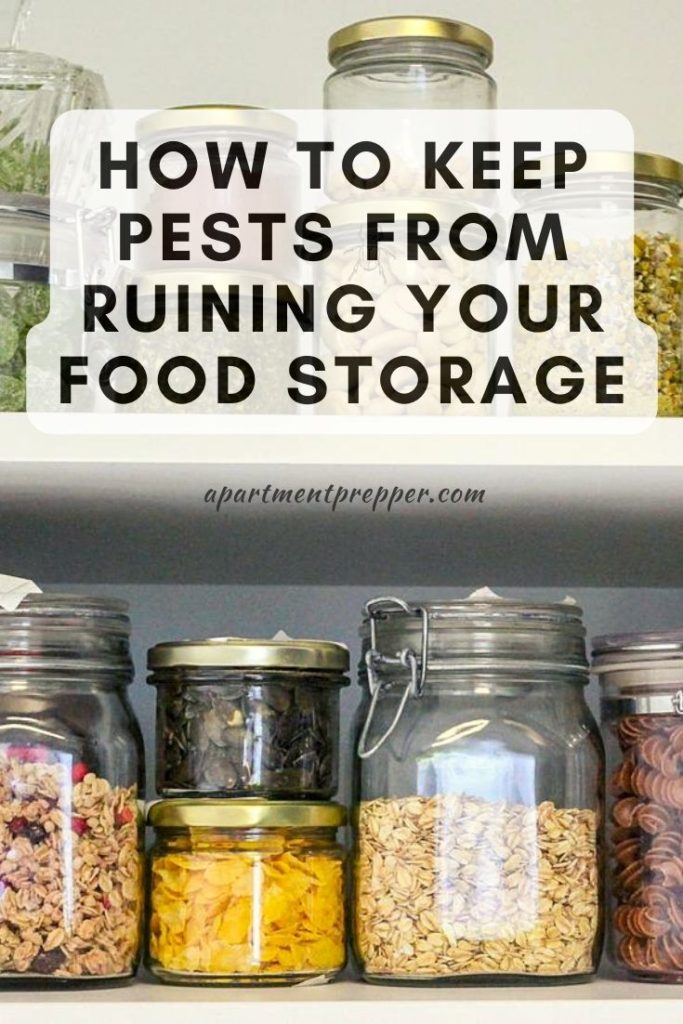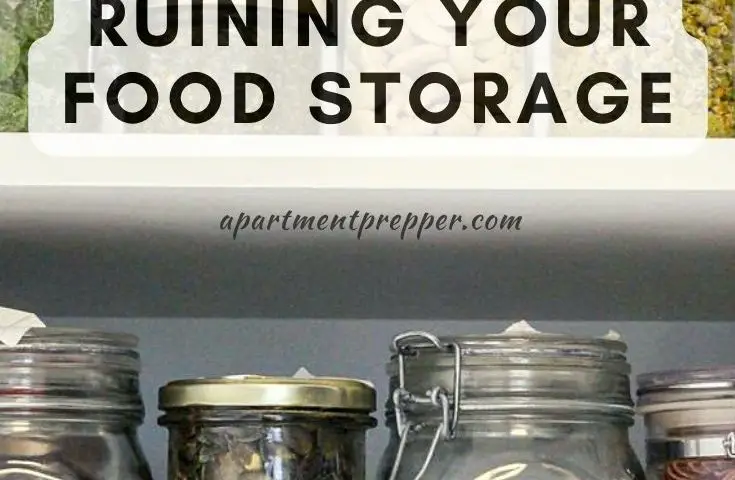Written by Bernie Carr
I recently wrote about storing food staples in Mylar bags which generated a lot of interest. One subject that is a concern for readers is how to keep pests from invading rice, flour, pasta and other staples. No one wants to find a bug or two in their food storage let alone have an infestation that ruins their stored foods. Let’s discuss how to keep these pantry pests away.
Foods that can attract pantry pests
- Flour
- Cornmeal
- Rice
- Pasta
- Cake mix
- Crackers
- Cookies
- Cereal such as oatmeal, grits
- Beans
- Popcorn
- Nuts
- Chocolate
- Powdered milk
- Tea
- Cured meats
- Raisins and other dried fruits
- Spices
Common bugs that get into food
Common pantry pests include weevils, moths, and small beetles. These bugs are more annoying than harmful. They don’t sting, bite or do any damage to your home, except getting into stored foods and grossing you out. Still, finding any type of bug in my food would really bother me and I would not want to eat that food.
How to pests get in?
You might wonder, how do these bugs get in when the package was completely sealed and you keep your kitchen and pantry clean. Well, these pests often get into food way back in the processing plant, warehouse, grocery store or delivery truck. They usually get into products that have been opened but they also can get into unopened boxes by chewing their way in or crawling through packaging folds and seams. You may not be able to see the tiny eggs, but if the food sits in your pantry long enough, the eggs will eventually hatch, and the larva will eat your food. Then you’ll find the tiny bugs crawling around just when you’re about to use your product.
How do you prevent bugs from infesting your food?
A lot of sites I viewed say you shouldn’t let the food sit in your pantry for too long, but this advice doesn’t help preppers who want to store food long term. So let’s look at ways we can keep these bugs away.
Freezing
One way to kill bugs like weevils and their eggs is by freezing. This is often done with flour. Place flour in a freezer bag, let the air out, then freeze for 48 hours. This will kill any eggs present. Don’t freeze in the original paper packaging as condensation may occur and ruin the flour. I have tried freezing flour in the past and have never found bugs in my stored flour.
TIP: Before repackaging in Mylar bags, leave the flour on the counter to allow it to come to room temperature.
Heating
Some sites recommend using heat to kill insect eggs. However, I have not tried the heat method so I cannot vouch for it.
Bay leaves
My Mom and Grandma both used this method. Place a dried bay leaf in the flour, rice, or any stored bulk foods. I also placed bay leaves in staples I stored in Mylar bags with oxygen absorbers nine years ago and have not had an infestation.
Bay leaves repel:
- Wasps.
- Flies.
- Sugar ants.
- Pantry moths.
- Earwigs.
- Weevils
- Cockroaches
Oxygen absorbers
Use oxygen absorbers in jars (airtight containers) or Mylar bags when storing your pantry staples. You can also use them when storing with a vacuum food sealer. Insects require oxygen to survive. If you remove the oxygen from the container, the insects or any eggs will not survive.
What to do if you have a bug infestation
If you see a package of food that has bugs, remove it from the pantry immediately. If you accidentally consumed that food before you realized it, don’t worry, the bugs are harmless and will not affect you. For some foods, you may be able get rid of them before using. If you find them in beans or rice, wash and soak for a few minutes and the insects will float to the top. Rinse a few times-repeat until you no longer see bugs. Unfortunately, you can’t wash flour or cereal.
Some people are okay with finding an occasional bug (They say “it’s just protein!”) but this would bother me so I personally would just toss out the food if I am unable to find all the bugs. As much as I hate to waste food, I would rather not hang on to infested food.
Check other packages to see if the infestation has spread. Remove the rest of the items, wipe everything down, and clean all the nooks and crannies.
Change your packaging and make sure every opened item is in an airtight jar or plastic zip lock bag. If you are storing food for long term, follow instructions found in my recent article.
You may have to clean the rest of your kitchen.
Have you found bugs in your stored food? What did you do? Please share in the comments!
If you found this article interesting or helpful, please consider helping us out (without costing you anything)! We are an affiliate of Amazon.com, which means we received a small commission if you click through one of our Amazon links when you shop, at totally no cost to you. This helps keep the lights on at the blog. Thanks!
About the author
Bernie Carr is the founder of Apartment Prepper. She has written several books including the best-selling Prepper’s Pocket Guide, Jake and Miller’s Big Adventure, The Penny-Pinching Prepper and How to Prepare for Most Emergencies on a $50 a Month Budget. Bernie’s latest e-book, FRUGAL DIY has just been released on Amazon. Her work appears in sites such as the Allstate Blog and Clark.com, as well as print magazines such as Backwoods Survival Guide and Prepper Survival Guide. She has been featured in national publications such as Fox Business and Popular Mechanics. Learn more about Bernie here.
FB: https://www.facebook.com/apartmentprepper
Instagram: https://www.instagram.com/apartmentpreppers/
Twitter: https://twitter.com/AptPrepper
YouTube: https://www.youtube.com/channel/UC7vOtdbo-wiBeBxD6puCr1Q
Pinterest: https://www.pinterest.com/aptprepper/
Image by Filmbetrachter from Pixabay



only sure method is to create an 02 starved environment that prevents insect eggs from hatching >>> use the 30 year old PROFESSIONAL food packers method – food grade bucket/locking lid – mylar bagging – 02 absorbers – tried and true is what you want ….
freeze it – if you can’t help yourself – but use some common sense – dry goods food is stored in unheated conditions for months in the frozen North – and the eggs prevail – Mother Nature provides for the species to survive – otherwise the entire northern hemisphere of the planet would be pest free ….
if you do freeze – don’t create more harm than good – allow the food to rise to ambient temps – absolutely use desiccant packs to compensate for the probable moisture you added ….
Hi Illini, Thanks for these solutions. I appreciate the comment!